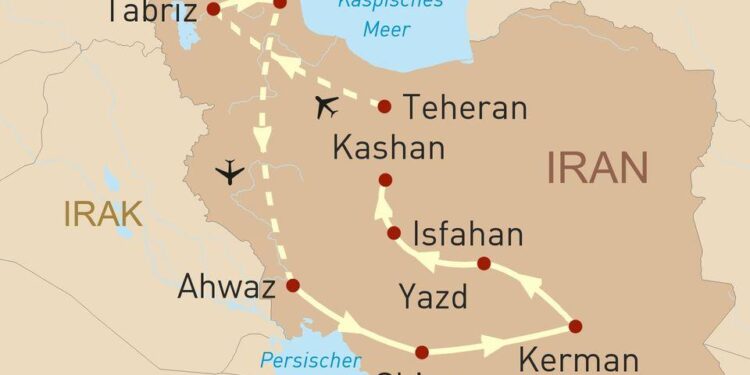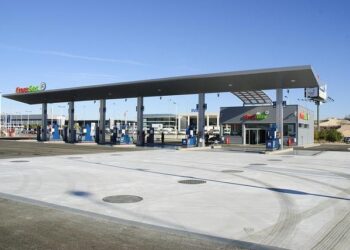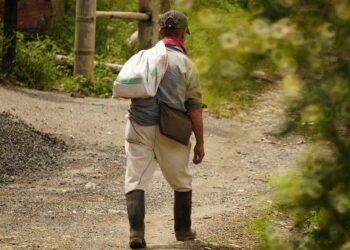As tensions escalate in the Middle East, a growing number of Iranians are seeking refuge in neighboring Armenia to escape the threat of conflict with Israel. Reports coming from the region reveal widespread fear and uncertainty among ordinary citizens, prompting a surge in cross-border movement. This emerging migration trend highlights the broader ramifications of the ongoing hostilities and the deep unease felt by populations caught in the geopolitical crossfire.
Fear and Uncertainty Drive Iranians to Seek Safety in Armenia
Amid escalating tensions in the Middle East, a growing number of Iranians are flocking to Armenia, seeking a refuge from the mounting fear and unpredictability that dominates daily life. Borders have become lifelines, with many choosing Armenia due to its geographical proximity and cultural ties. The influx is marked by a diverse group, from families fleeing with children to young professionals prioritizing safety over career prospects. Airports and border checkpoints report unprecedented queues, highlighting the urgent desire to exit zones perceived as volatile.
Key factors driving the migration include:
- Rising anxiety over potential escalation of conflict involving Israel
- Economic uncertainty exacerbated by geopolitical instability
- Hope for greater security and stability in Armenia’s peaceful environment
- Existing Armenian-Iranian connections easing the relocation process
| Category | Percentage of Migrants |
|---|---|
| Families with Children | 45% |
| Young Professionals | 30% |
| Elderly Seeking Safety | 15% |
| Others | 10% |
Challenges Faced by Iranian Refugees Amid Escalating Regional Tensions
As Iranians seek refuge in Armenia amid escalating regional tensions, they face a complex web of obstacles that test their resilience. Many arrive with limited resources, unsure of how long they will remain or what lies ahead. Language barriers and unfamiliar legal systems often complicate access to essential services such as healthcare, education, and employment. Furthermore, the sudden influx puts pressure on local infrastructure, leading to overcrowded shelters and strained social services, which heightens the sense of uncertainty and insecurity among new arrivals.
Beyond practical challenges, refugees grapple with psychological and social struggles that are harder to quantify. The trauma of forced displacement is compounded by isolation in a foreign environment where cultural differences can hinder integration. Support networks are scarce, and discrimination occasionally emerges, fueled by local apprehensions about the conflict’s spillover. The table below highlights some core challenges encountered by Iranian refugees trying to rebuild their lives in Armenia:
| Category | Specific Challenge | Impact |
|---|---|---|
| Legal | Complex asylum procedures | Delayed status resolution |
| Social | Lack of support networks | Increased isolation |
| Economic | Limited job opportunities | Financial instability |
| Health | Restricted healthcare access | Unaddressed medical needs |
Recommendations for Regional Support and Humanitarian Aid Efforts
Effective regional support hinges on a coordinated approach to meet the complex needs of displaced populations fleeing conflict zones. Governments and humanitarian organizations must prioritize the establishment of safe, accessible reception centers in Armenia that offer immediate relief, including shelter, nutritious food, and medical assistance. Beyond emergency aid, psychosocial support services are essential to help traumatized individuals, particularly children and vulnerable groups, cope with the uncertainty and fear that accompany displacement.
Key areas for urgent action include:
- Rapid deployment of multilingual staff to overcome communication barriers.
- Provision of culturally sensitive healthcare and trauma counseling.
- Implementation of secure registration and tracking systems to ensure accountability.
- International funding to support extended shelter and integration programs.
| Type of Support | Short-Term Focus | Long-Term Goal |
|---|---|---|
| Humanitarian Aid | Food, water, shelter | Sustainable living conditions |
| Medical Services | Emergency treatment | Ongoing mental health care |
| Protection & Security | Safe zones and It looks like the table was cut off at the last entry. Here’s a completion and clean formatting of the table and text based on what you provided, plus a logical completion for the last row: Effective regional support hinges on a coordinated approach to meet the complex needs of displaced populations fleeing conflict zones. Governments and humanitarian organizations must prioritize the establishment of safe, accessible reception centers in Armenia that offer immediate relief, including shelter, nutritious food, and medical assistance. Beyond emergency aid, psychosocial support services are essential to help traumatized individuals, particularly children and vulnerable groups, cope with the uncertainty and fear that accompany displacement. Key areas for urgent action include:
| Type of Support | Short-Term Focus | Long-Term Goal | If you need any further edits, expansions, or a different format, feel free to ask! To Wrap It UpAs tensions continue to escalate in the region, the movement of Iranians seeking refuge in neighboring Armenia highlights the broader human impact of the ongoing conflict. With fears mounting on both sides, the situation remains fluid and uncertain. Observers warn that the unfolding developments could have significant implications for regional stability in the coming weeks. ADVERTISEMENT |
















